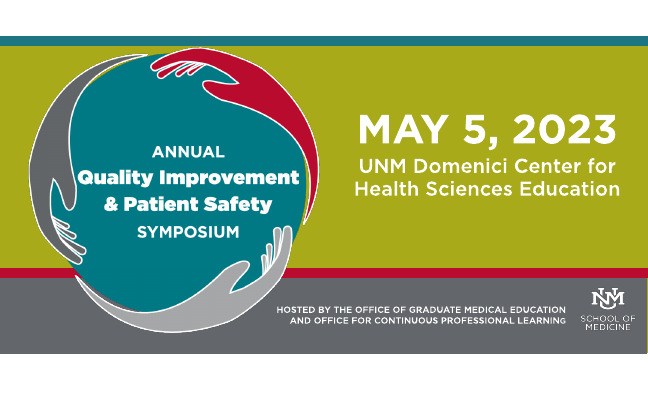Document Type
Poster
Publication Date
3-6-2020
Abstract
Introduction
New Mexico has long experienced challenges associated with opioid use disorder (OUD). In 2017, New Mexico had the seventeenth highest drug overdose death rate in the United States. Although this ranking has decreased since prior years, New Mexico experienced 16.7 overdose deaths involving opioids per 100,000 persons in 2017, compared to the national average of 14.6 per 100,000 persons. Additionally, New Mexico saw an 82% increase in opioid overdose related emergency department visits between 2013-2015, and this rate has stayed consistent since 2015.1 In 2017, of the 332 overdose deaths in New Mexico, the most common drugs causing overdose deaths were prescription opioids (51.5% - 171 deaths) followed by heroin (43.4% - 144 deaths).2
According to the New Mexico Department of Health Syringe Services Program, in 2016 6,976 of 9,649 enrollees (72%) indicated heroin use. Additionally, using data from the New Mexico Board of Pharmacy Prescription Monitoring Program it was estimated in 2017 that 12,400 patients (22%) with chronic opioid prescriptions were in need of treatment for OUD.3 Given that these estimates are limited to individuals captured by these two data sources, the estimate of 19,376 individuals in New Mexico experiencing OUD is a gross underestimate. Given the negative outcomes associated with OUD and the size of the population in need of treatment in New Mexico, there is a demand for more providers to offer OUD treatment.
Medication-Assisted Treatment (MAT), including buprenorphine, is the mainstay maintenance therapy for OUD. In order to prescribe buprenorphine, providers must complete an 8 hour DEA-X waiver training. Given the heavy burden of OUD in New Mexico, our aim was to increase the number of General Internal Medicine (GIM) attending physicians at the University of New Mexico Hospital (UNMH) who have completed DEA-X waiver training to 50% by January 1st, 2020.
Methods
We identified the number of GIM attendings at UNMH who had already completed a DEA-X waiver training. In order to analyze the barriers to completing a DEA-X waiver training, we attended a monthly departmental GIM meeting where we explained the current need for more providers to prescribe buprenorphine in New Mexico and the process of our quality improvement project. Following the presentation, we surveyed 13 out of 20 GIM attendings via RedCap. The survey was comprised of 21 questions assessing attitudes toward OUD and buprenorphine, reservations about prescribing buprenorphine, and interest in obtaining a DEA-X waiver. Survey questions were designed on a five response Likert scale. Participants were asked to include their schedule availability for future DEA-X waiver trainings. Upon completion of the survey, we analyzed participant attitudes and barriers using a five-point Likert scale, by assigning 1 to strongly agree through 5 to strongly disagree. Common barriers were identified by grouping and summing the agreed and strongly agreed responses. Based on the provider availability submitted in the survey, we sent out a list of training dates to the GIM attendings.
Results
Of the 13 UNM GIM attendings surveyed, 12 (92%) thought OUD is a chronic disease. Thirteen (100%) thought increasing buprenorphine availability is important. Six (46%) expressed interest in getting DEA-X waiver trained. The top reservation classified by survey respondents who selected either Agree or Strongly Agree to completing the training was insufficient time available in the provider’s current patient schedule (10/13), followed by insufficient work time dedicated to complete the training (7/13). Office staff stigma was the least concerning reservation (3/13). Based on our interventions, the number of GIM attending physicians at UNMH with DEA X-waiver training increased from 3 to 6, which corresponds with a 100% increase.
Conclusions
Although 100% of GIM attendings surveyed thought increasing the availability of buprenorphine was important, only 45% were interested in getting DEA-X waiver training themselves. One of the major barriers identified was insufficient time to complete the training. One possible solution is to have clinic managers set aside time during normal work hours for this purpose.
Our intervention for the first PDSA cycle was to educate the attendings on the importance of having a DEA-X waiver and to send participants information about local DEA-X waiver trainings. With this intervention, we exceeded our goal by achieving a 100% increase in GIM attendings with DEA-X waiver training. For our next PDSA cycle we plan to work with clinics to host a DEA-X waiver training on-site and during normal work hours or during a division faculty meeting to decrease some of the burden and increase the number of physicians trained.
Furthermore, residents need to work with a supervising attending with a DEA-X waiver in order to prescribe Suboxone. 54% of attendings said that having residents who are DEA-X waiver trained would encourage them to become trained too. Therefore, increasing the number of resident physicians who have completed the DEA-X waiver training will in turn increase the amount of GIM attendings who become DEA-X waiver trained.
Recommended Citation
Metcalf, Heather; Sam Paltrow-Krulwich; Claire Sava; Kate Stanfield; Meagen Twyeffort; Ann Morrison; Vanessa Jacobsohn; Krystal Chan; and Susarsri Prapasiri. "Increasing DEA-X Waiver Trained Providers through Quality Improvement." (2020). https://digitalrepository.unm.edu/hsc_qips/8


Comments
Presented at the University of New Mexico Health Science 2020 Annual Quality Improvement and Patient Safety Symposium